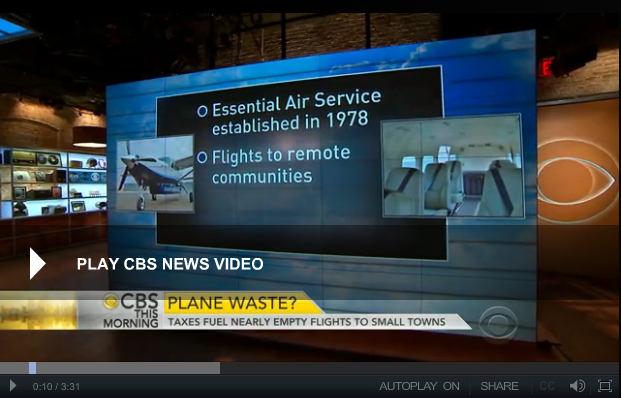The Essential Air Service program pays airlines to fly to communities the government deems worthy of commercial air service.
In Minnesota, Bemidji, Brainerd, International Falls, Thief River Falls and Hibbing qualify for EAS grants, in which airlines use regional jets to funnel people to the Twin Cities.
Last week, CBS reports today, a flight from Denver to Devils Lake, North Dakota had only four passengers.
The Department of Transportation pays the airline $6 million a year to provide air service to the city few people want to go.
Passenger Mark Zimmer said it saves him about two hours of travel time each way.
“Parking is a lot easier here and lot closer for me to come here than go to Grand Forks,” Zimmer said.
Devils Lake mayor Dick Johnson said the flights attract business and he estimates they help inject $10 million a year into the local economy.
“Our numbers are starting to go up; It’s key to our cities,” Johnson said. “I think small rural communities are a major part of our country and to keep them viable, to keep them functional, to keep them a viable community, sometimes you need to have help from the big communities.”
But Forum News Service said last fall that the planes have been half full and “popular.”
When Delta provided service to Thief River Falls, it averaged only four to six passengers per flight on 34-seat Saab turboprops, a 2011 study said.
Great Lakes Airlines took over the service last summer after suspending service last February when it had a difficult time finding pilots. It now flies a turbo-prop airplane with 19 seats.
Related: Delta to end Rochester-Detroit flights in April (Rochester Post Bulletin).

